-

Figure 1.
Diagram of well-watered control (W), drought preconditioning (D5 + W3), and drought–rewatering (D13 + W) treatments. W plants grew under consistent watering through 24 d of treatment; D5 + W3 plants underwent drought preconditioning (5 d drought + 3 d rewatering), then water-withholding for 5 d and rewatering for 11 d; D13 + W plants grew under water-withholding for 13 d and were then rewatered for 11 d. The measurement time points are indicated by the indicators, as follows: 0 d, 5 d, 8 d, 13 d, 16 d, and 24 d.
-
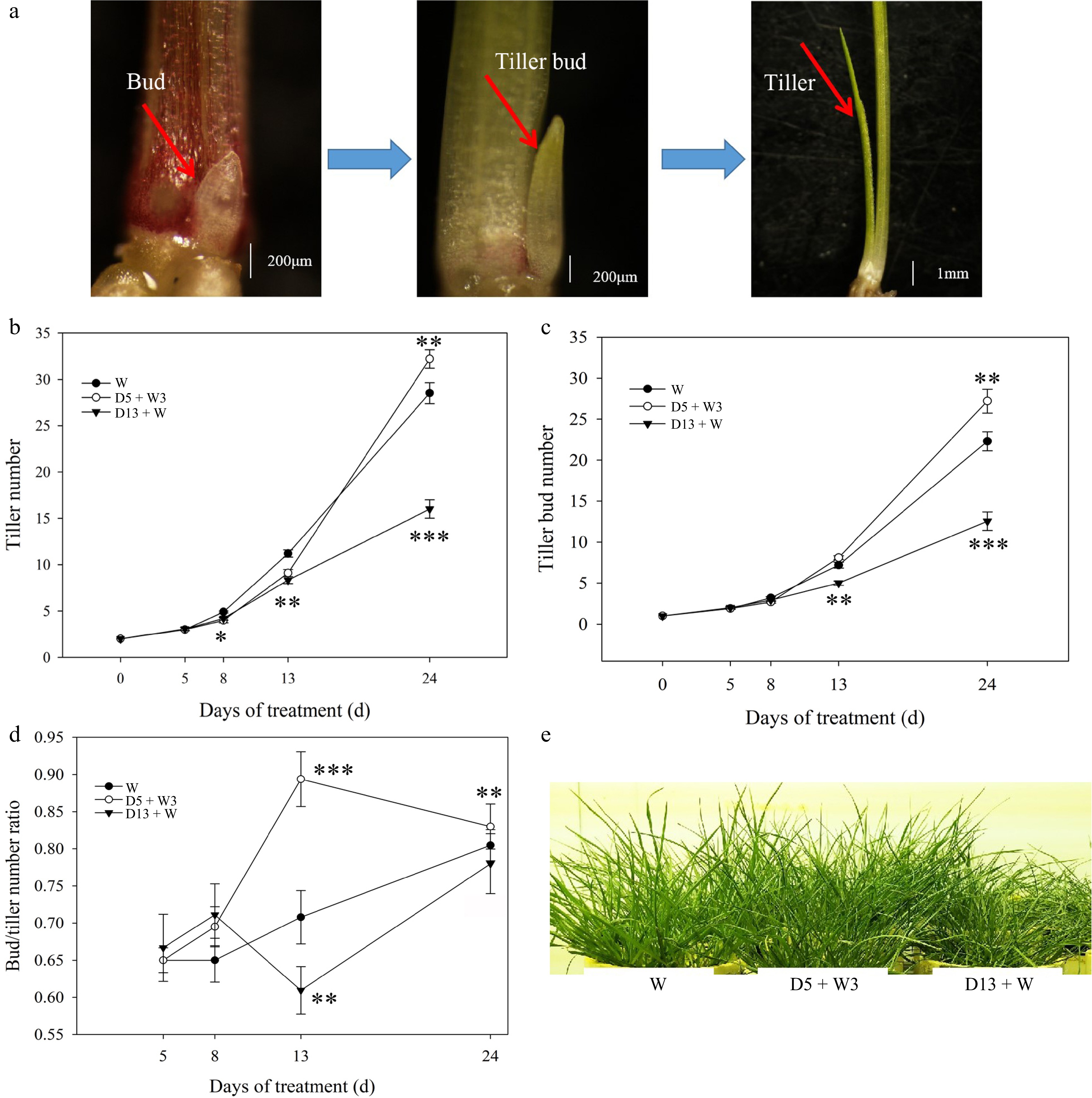
Figure 2.
Effect of drought preconditioning on tiller development in perennial ryegrass. (a) The process of tiller bud initiation and elongation. (b) Tiller number. (c) Tiller bud number. (d) Bud/tiller ratio. (e) Phenotype of plants at 24 d. A tiller bud longer than 1 cm was designated as a tiller. Tiller buds were observed after removing the leaf sheath. The bud/tiller ratio was calculated as the total number of buds divided by the total number of tillers. Ten plants were measured for each treatment. Values were calculated as means ± SE. *, indicates significant differences at p < 0.05, while ** indicates significant differences at p < 0.01, and *** indicates significant differences at p < 0.001.
-
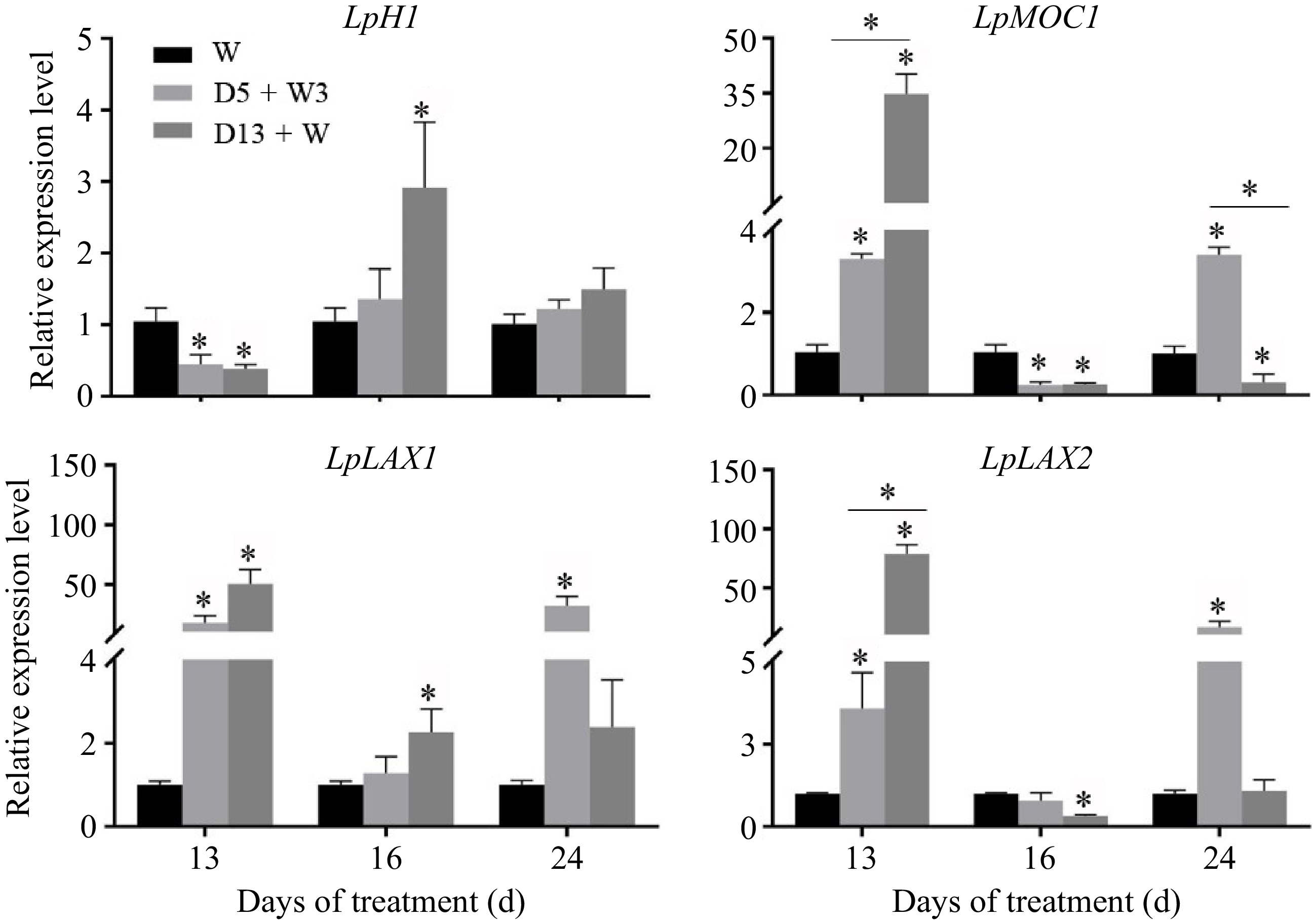
Figure 3.
qRT-PCR analysis of expression level of genes involved in axillary bud initiation in crowns of perennial ryegrass. LpH1, homeobox 1 protein; LpMOC1, monoculm 1; LpLAX1, lax panicle 1; LpLAX2, lax panicle 2. Values were calculated as means ± SE. *, indicates significant differences at p < 0.05.
-
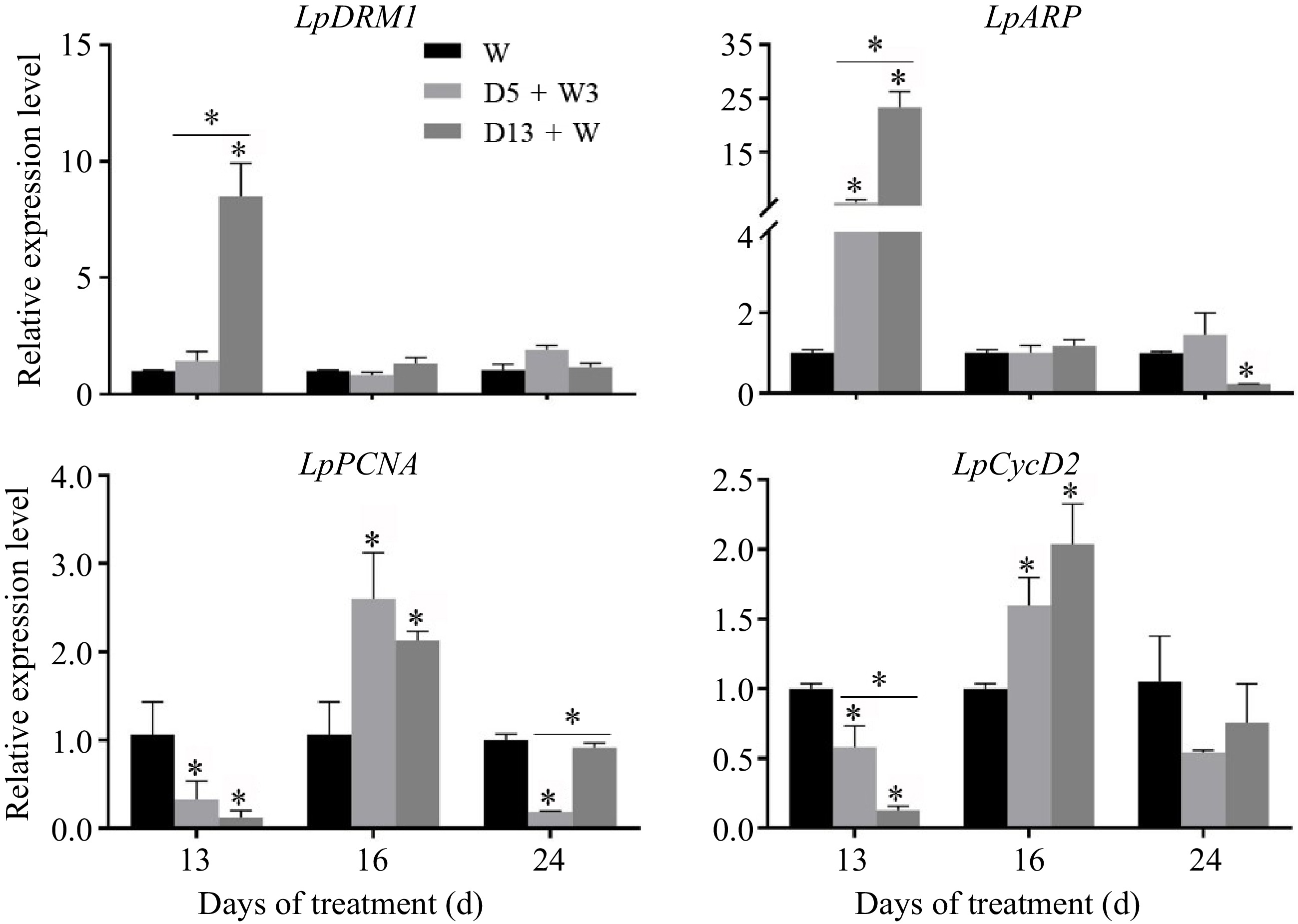
Figure 4.
qRT-PCR analysis of expression level of genes involved in bud dormancy (LpDRM1 and LpARP) and bud activity (LpPCNA and LpCycD2) in crowns of perennial ryegrass. LpDRM1, dormancy-related protein-1; LpARP, auxin-repressed protein; LpPCNA, proliferating cell nuclear antigen; LpCycD2, cyclin D2. Values were calculated as means ± SE. *, indicates significant differences at p < 0.05.
-
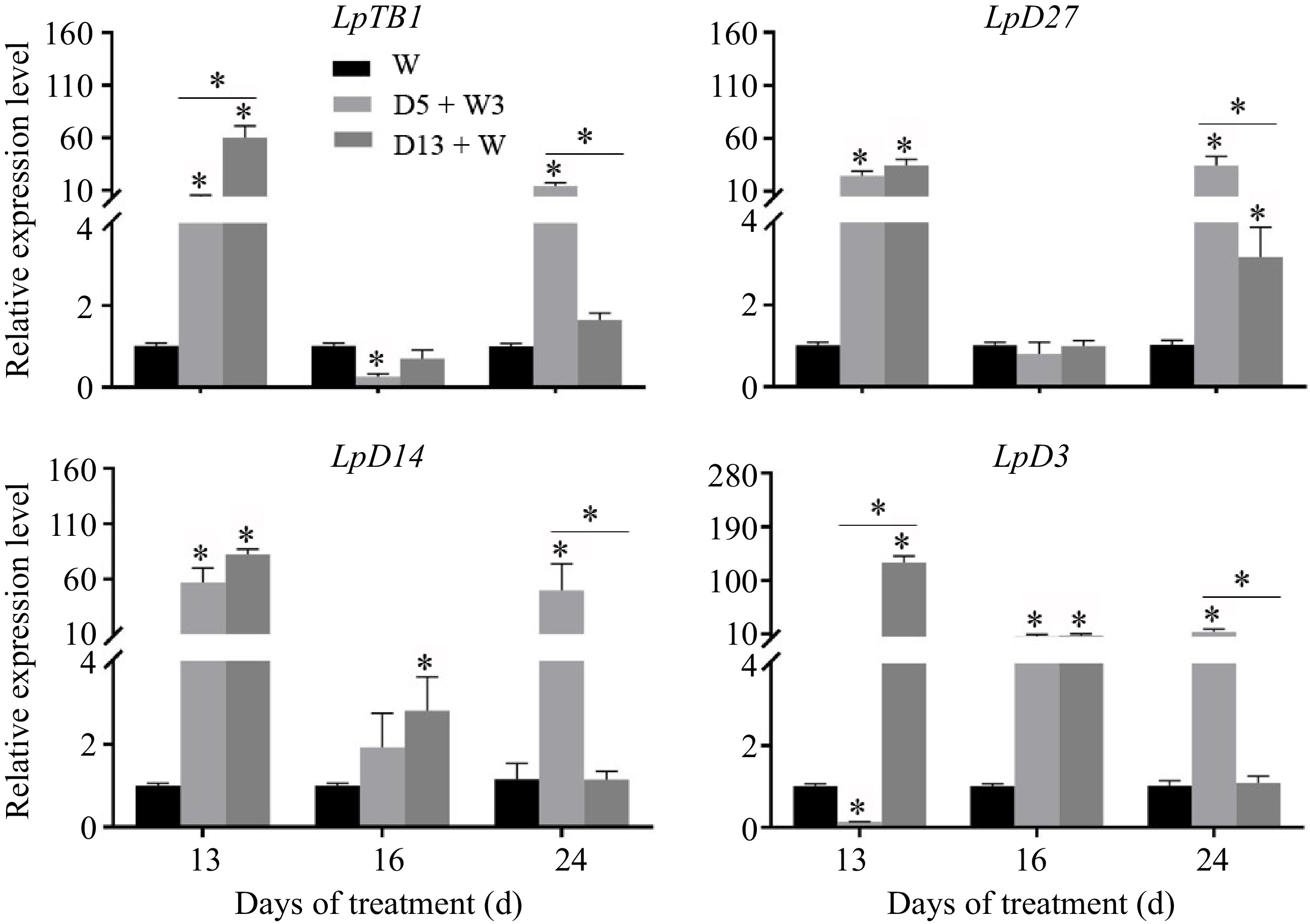
Figure 5.
qRT-PCR analysis of expression level of genes involved in repressing axillary bud outgrowth in crowns of perennial ryegrass. LpTB1, teosinte branched 1; LpD27, dwarf 27; LpD14, dwarf 14; LpD3, dwarf 3. Values were calculated as means ± SE. *, indicates significant differences at p < 0.05.
-
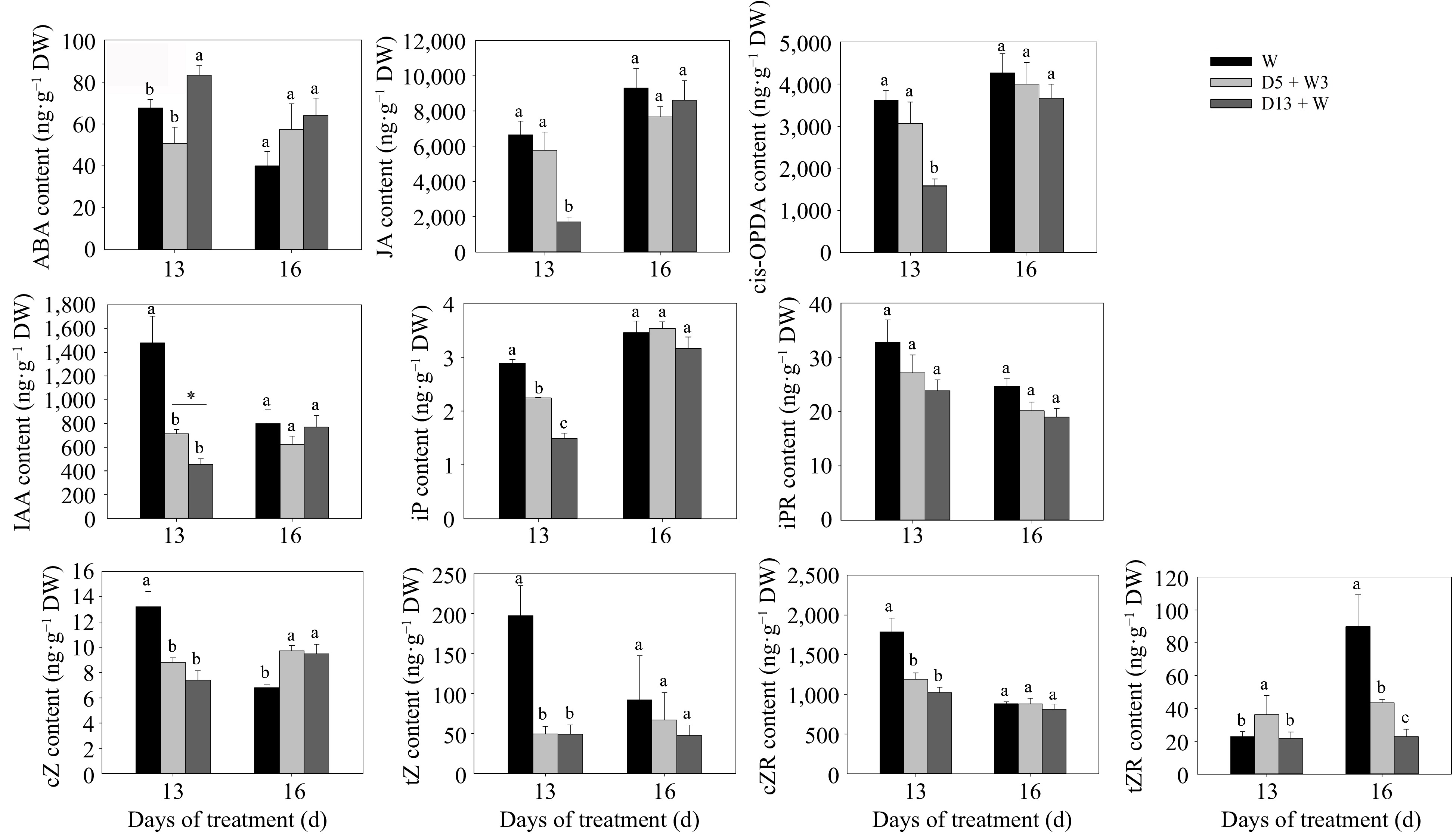
Figure 6.
Hormone content in crowns of perennial ryegrass under drought preconditioning. Abscisic acid (ABA), jasmonic acid (JA), cis-12-oxophytodienoate (cis-OPDA), indole-3-aceticacid (IAA), isopentenyladenine (iP), isopentenyladenine riboside (iPR), cis-Zeatin (cZ), trans-Zeatin (tZ), cis-Zeatin riboside (cZR), and trans-Zeatin-riboside (tZR). Values were calculated as means ± SE. Different lowercase letters above the columns indicated significant differences at p < 0.05 at the same day. *, indicates significant differences at p < 0.05.
-
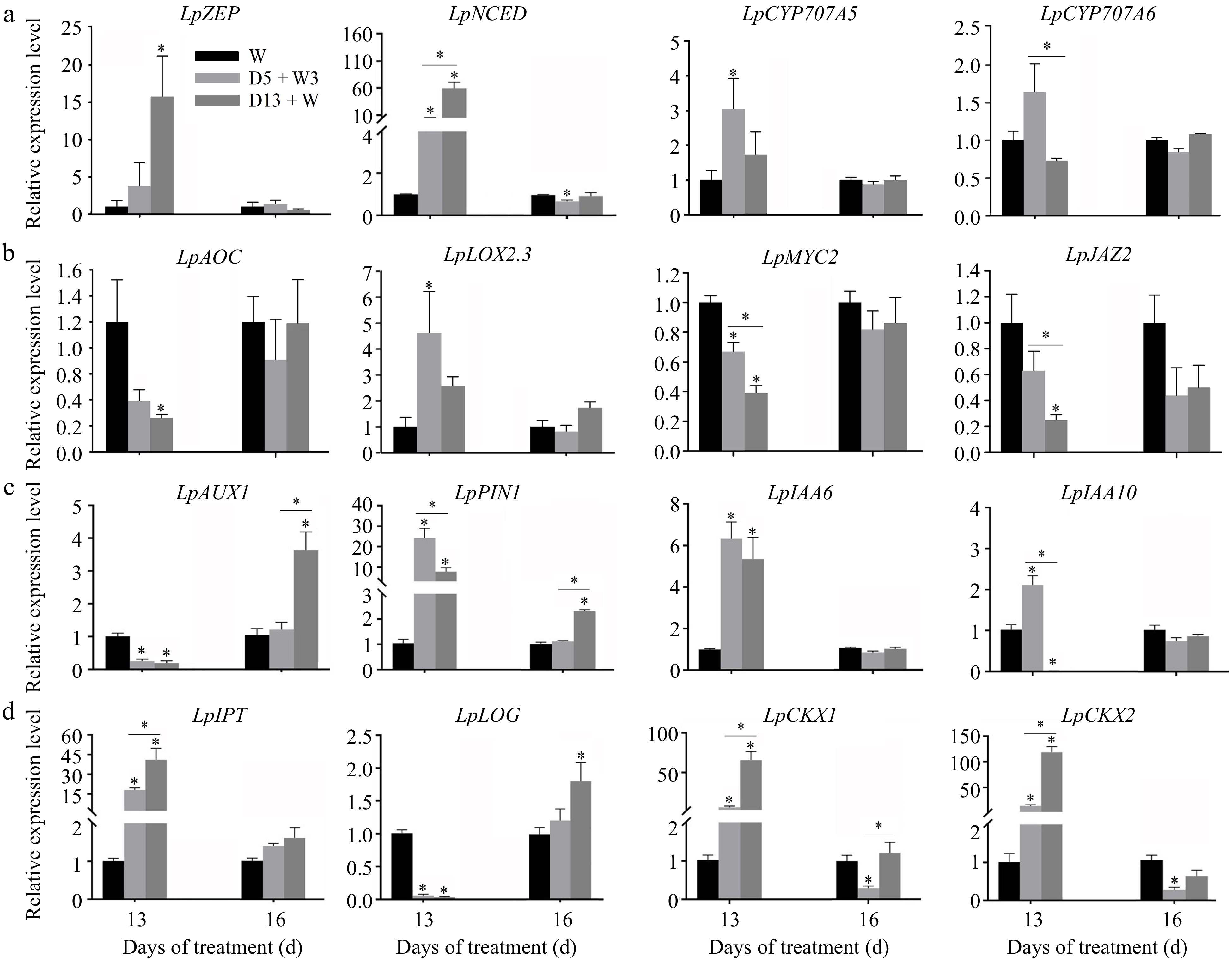
Figure 7.
qRT-PCR analysis of expression levels of genes related to ABA synthesis genes (LpZEP and LpNCED), ABA degradation genes (LpCYP707A5 and LpCYP707A6), JA synthesis genes (LpAOC and LpLOX2.3), JA signaling pathway genes (LpMYC2 and LpJAZ2), auxin transporter genes (LpAUX1, LpPIN1) and auxin-responsive genes (LpIAA6, LpIAA10), and CK biosynthesis genes (LpIPT, LpLOG) and catabolism genes (LpCKX1 and LpCKX2) in crowns of perennial ryegrass. a, LpZEP, zeaxanthin epoxidase; LpNCED, 9-cis-epoxycarotenoid dioxygenase; LpCYP707A5, abscisic acid 8'-hydroxylase 1; LpCYP707A6, abscisic acid 8'-hydroxylase 2. b, LpAOC, chloroplast allene oxide cyclase; LpLOX2.3, lipoxygenase 2.3; LpMYC2, transcription factor MYC2; LpJAZ2, Jasmonate ZIM domain-containing protein 2. c, LpAUX1, auxin transporter protein 1; LpPIN1, probable auxin efflux carrier component 1; LpIAA6, auxin-responsive protein IAA6; LpIAA10, auxin-responsive protein IAA6. d, LpIPT, adenylate isopentenyltransferase 1; LpLOG, cytokinin riboside 5'-monophosphate phosphoribohydrolase LOG; LpCKX1, cytokinin dehydrogenase 1; LpCKX2, cytokinin dehydrogenase 2. Values were calculated as means ± SE. *, indicates significant differences at p < 0.05 on the same day.
-
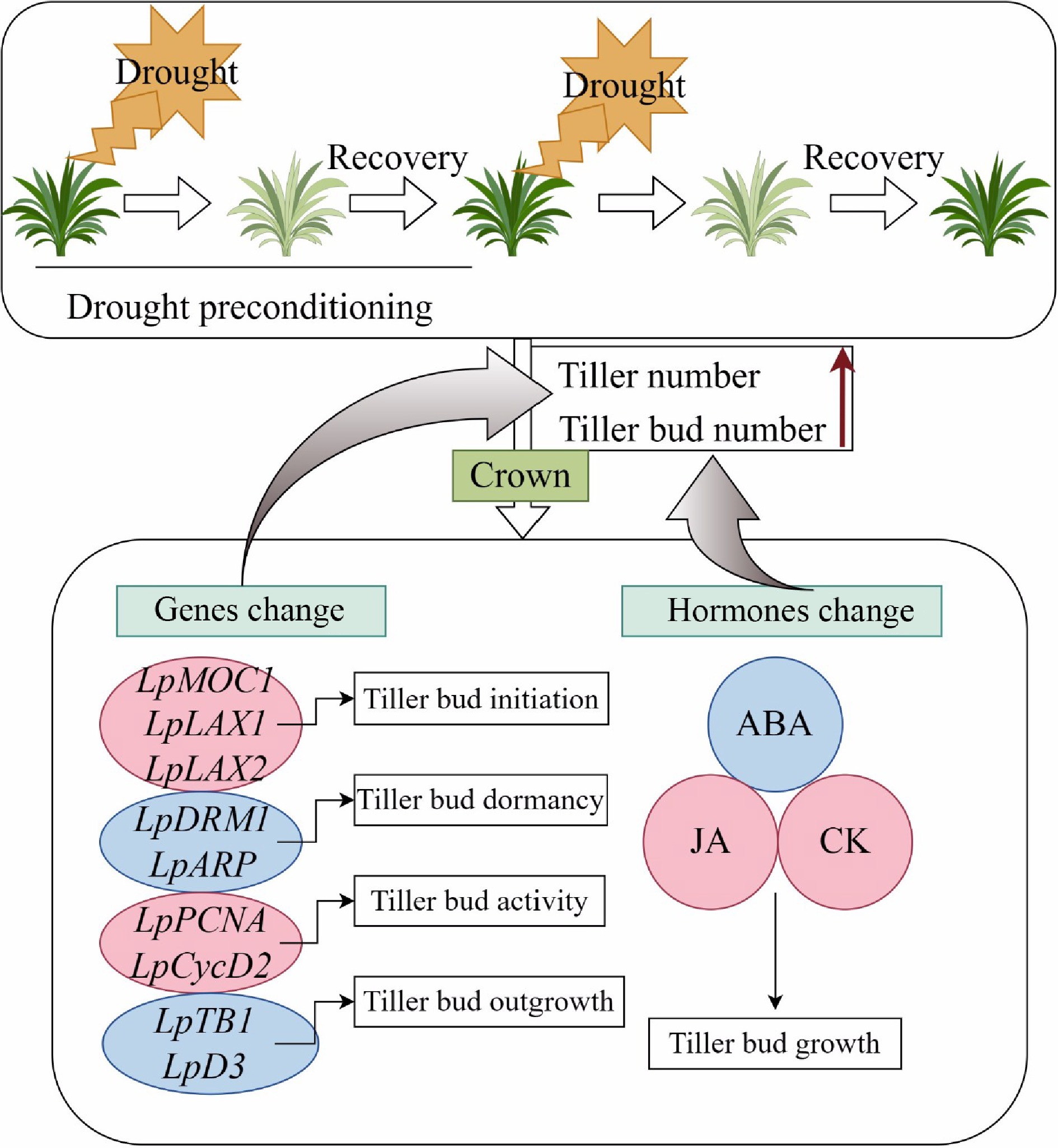
Figure 8.
A proposed model of the genes and hormones responding to drought preconditioning in crowns of perennial ryegrass. The black box above describes the D5 + W3 treatment, which significantly increased the number of tillers and tiller buds at the conclusion of the experiment. The changes in tiller bud initiation, dormancy, activity, and outgrowth-related genes, as well as hormones, were summarized in the black box below. The red circle is indicative of a significant increase, while the blue circle indicates a significant decrease.
Figures
(8)
Tables
(0)